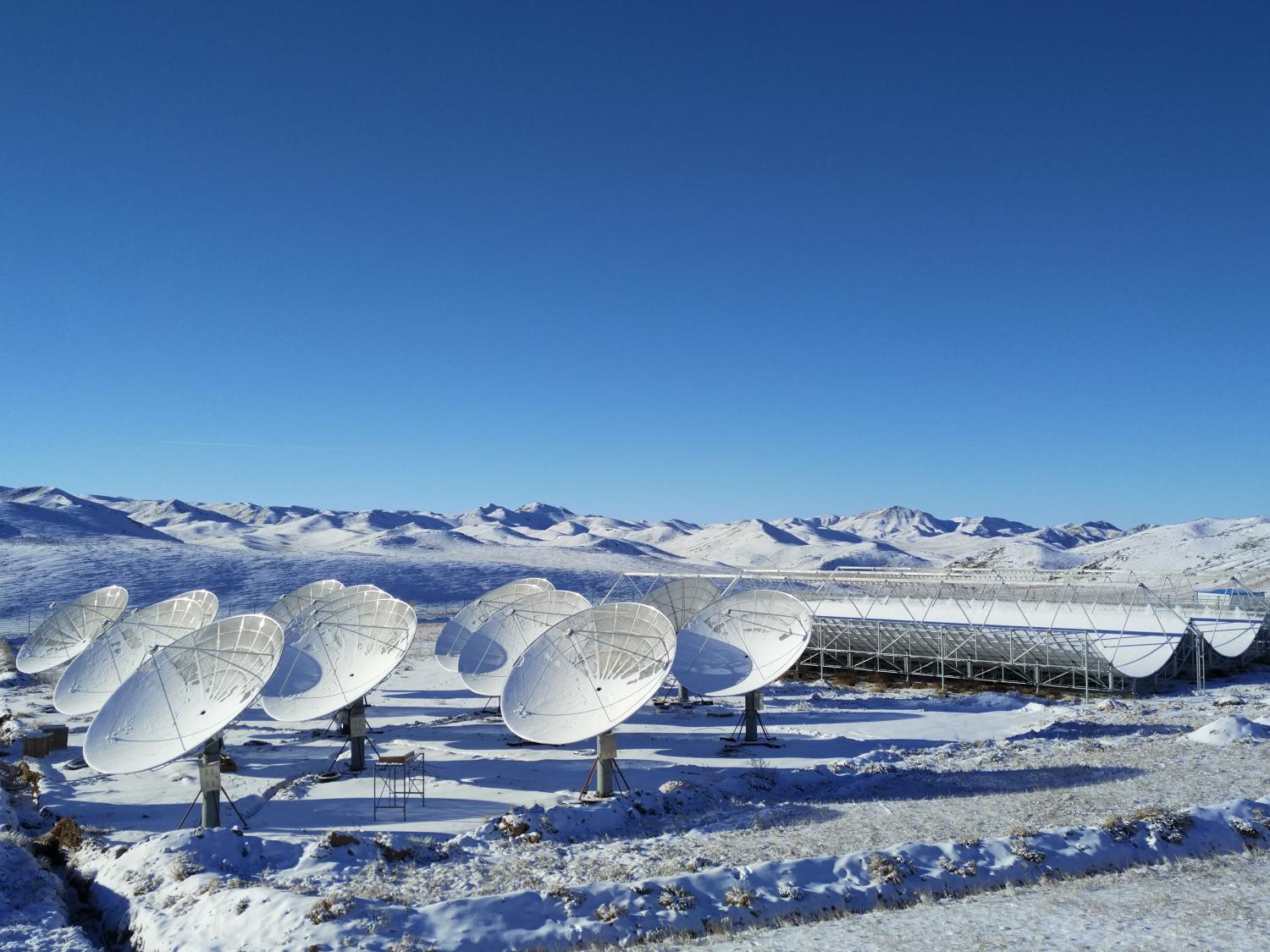Tianlai becomes newest member of SKA pathfinder family

SKA pathfinders and precursors are facilities all over the world involved in SKA-related science and technology studies. With the SKA telescopes already under construction, pathfinder discoveries continue to inform and help to refine the SKAO’s science cases, and the new technologies and techniques they develop may be applicable to the Observatory in the future.
Located near Hongliuxia, north-west China, and operated by the National Astronomical Observatories (NAOC) of the Chinese Academy of Sciences, the Tianlai Experiment aims to test key technologies for the radio detection of the mysterious dark energy, which is thought to make up about 70% of our cosmos and drive the acceleration of the expansion of the Universe.
Dark energy cannot be detected directly, but its abundance and properties can be analysed by observing how the expansion rate of the Universe changes over time. The “sound” of the Big Bang left an imprint on the matter distribution in the early Universe that has now grown into large-scale structures. By studying the large-scale matter distribution, astronomers can derive these “baryon acoustic oscillations” and determine the cosmic expansion rate over time.
The Chinese experiment is named "Tianlai", which literally means "heavenly sound", as its goal is to detect these acoustic oscillations. The Tianlai experiment will look for the 21 cm signal emitted by hydrogen atoms, the most abundant element in the Universe. Because the Universe is expanding, this signal has shifted to longer wavelengths over time, a process known as redshift. Tianlai will cover a range of radio wavelengths (and hence redshifted signals) to map the 3D distribution of structures.
The Tianlai experiment currently consists of two arrays: the Tianlai cylinder array, which has three adjacent cylindrical reflectors with a total of 96 receivers, and the Tianlai dish array, which consists of 16 dishes, each six metres in diameter. These arrays, though of relatively small scale, were built to test the technique of hydrogen intensity mapping, which could be applied to larger arrays such as the SKA telescopes and is already the subject of pilot studies on South Africa’s MeerKAT radio telescope.
The Tianlai team includes researchers and students from NAOC and several universities in China, as well as from a few universities in the US and France. The experiment is also serving as an excellent platform for training young students and postdocs on the relevant technologies.
"With the Tianlai pathfinder arrays we will experiment with various mathematical methods to process the data and extract the elusive 21-cm signal, which will also be applied to the SKA telescopes. Testing these techniques with the real instrument and data will allow us to identify the real issues, which cannot all be anticipated from theoretical speculations," said Tianlai Chief Scientist Prof. Xuelei Chen from NAOC.
“Pathfinder facilities have paved the way for the SKAO’s telescopes, and even as we now head towards early operations, it is valuable to have existing telescopes and experiments feeding their insights into our science planning and preparations,” said Dr Robert Braun, SKAO Director of Science.
To swiftly map the sky, the Tianlai pathfinder arrays have a relatively large field of view, which is also ideal for other SKAO-related studies, including the search for fast radio bursts (FRBs) – a phenomenon consisting of short bursts of radio waves from far outside our Milky Way galaxy. Three additional cylindrical antennas will be deployed at a distance from the existing array to improve its FRB-hunting capabilities.
Learn more about the SKA pathfinders and precursors here.





